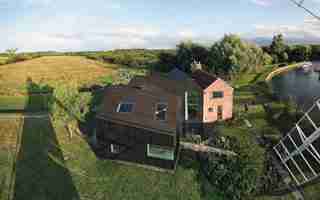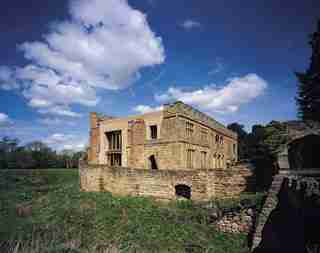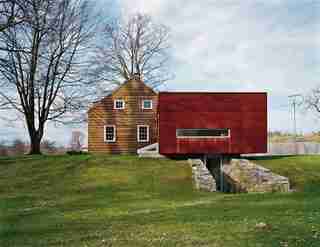7 Historic Homes Reinvented with Modern Additions
It's easy to be drawn to an old buildings's charm and character, but the reality is, a historic residence is not typically synonymous with easy modern living. In the new book The New Old House (Abrams, $60), design reporter Marc Kristal shows us how architects are taking timeworn properties and reinventing them with bold contemporary additions. A home may boast a traditional brick façade from one angle, while another viewpoint reveals an unexpected expanse of sleek dark-stained wood. Kristal tours a curated collection of such houses around the world, all more compelling—and more livable—than they were before their transformations. "Just as the braiding of the practical and personal in my workroom produced a condition in which my imagination is encouraged by layers of experiences, so too can a historic dwelling inspire you to respond to its promise with a new design that builds on an existing narrative—to create an architectural marriage that supports, sustains, and brings out the best," he writes. Read on to see some of our favorite homes from the book.

Hunsett Mill
After removing five awkward extensions that had been added to this 18th-century English cottage, writes Kristal, London firm Acme built a window-studded black "shadow" that curves behind the structure.

Astley Castle
"It is, says architect Freddie Phillipson of the London firm Witherford Watson Mann, which executed the [English] castle's resurrection, 'a grand ruin in the picturesque tradition, isolated in the landscape,'" writes Kristal. "The closer you get, the more this first impression dissipates. For one, there is the realization that, within the jagged remains of the old southern elevation, the first that you see, a rectilinear wall of new brick has been inserted."

Ten Broeck Cottage
Instead of creating an addition that imitated the style of their original Colonial farmhouse in Livingston, New York, architects Brian Messana and Toby O'Rorke devised a steel-clad form with a wall of sliding glass doors.
Greenwich House
"Architect Allan Greenberg appended a quiet two-story Miesian glass box to an extravagant classical revival confection in Connecticut," writes Kristal.
Cotswold House
Architect Richard Found couldn't demolish the early 19th-century gamekeeper's cottage on the property he bought in Cranham, England, so he decided to give it a contemporary spin. "Taking his cue from the existing conditions, the architect conceived of the extension as a series of abstracted retaining walls made from the same signature Cotswold stone as the cottage, which descend the slope behind the building and actually leave the back of the new construction buried in the landscape," writes Kristal.
Wakelins
Along with restoring this original lime plaster house in England, architect James Gorst added a wing covered in custom-crafted strips of scalloped oak.
Collage House
"[Architect John] Tuckey eliminated the derelict sheds in the short leg of his L-shaped property and replaced them with a garden and new two-story bedroom wing," writes Kristal of this now light-filled London home.